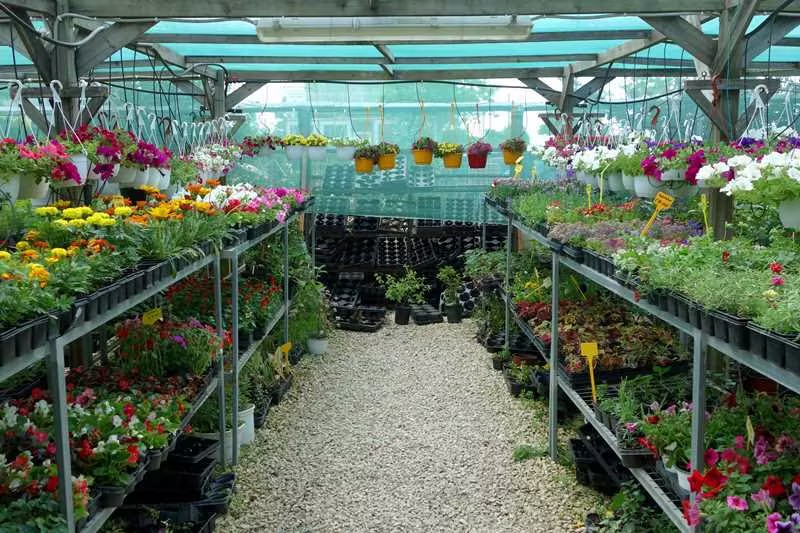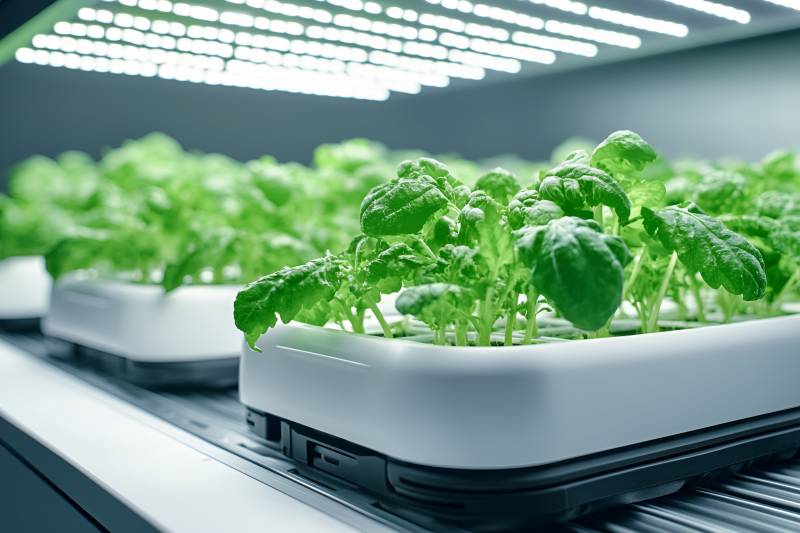Sansi LED: Sustainable LED Lighting and Integrated LED Display
Delivering premium and professional LED Display, LED Lighting, Smart City Integration solutions, trusted by over 60,000 companies worldwide everyday. From industrial lighting to commercial lighting, from outdoor advertising to XR & VR production, Sansi LED greatly improves the quality and sustainability of your business with 30 years of expert experiences.
Greenhouses provide a controlled environment for plant growth, but when natural light is insufficient—such as during winter or in cloudy regions—LED grow lights become essential for supplemental lighting. These lights simulate sunlight spectra, promote photosynthesis, and support healthy plant development. However, with the wide range of products available on the market, how do you scientifically select the best LED grow lights for your greenhouse? Here’s a comprehensive guide to help you make an informed decision.
Understand Your Plants’ Light Requirements: Spectrum and Intensity
Different plants and growth stages require varying light conditions. Selecting the right spectrum and intensity is crucial for healthy crop development.
Light Spectrum Requirements:
• Blue Light (400-500nm): Promotes stem and leaf growth, ideal for seedlings and leafy greens.
• Red Light (600-700nm): Accelerates flowering and fruiting, suitable for crops like tomatoes and peppers.
• Full Spectrum: Covers a continuous spectrum from 400-700nm, closely mimicking natural sunlight and supporting plants throughout their entire growth cycle.
Light Intensity Requirements:
Measured in PPFD (Photosynthetic Photon Flux Density), with units of µmol/m²/s. Different crops require specific PPFD levels:
• Leafy Greens: 200-400 PPFD
• Flowering/Fruiting Crops: 600+ PPFD
Ensure that your lights meet the specific needs of your crops to avoid under-lighting or energy waste.

Full-Spectrum Adjustable: One Light for Multiple Stages
Traditional fixed-spectrum lights can’t adapt to the changing needs of plants across growth stages. Full-spectrum adjustable LED technology addresses this issue.
• Adjustable Spectrum: Modify the ratio of red and blue light to precisely match the needs of plants from seedling to flowering stages.
• Adjustable Intensity: Change brightness levels based on seasons or weather to prevent light burn or leggy growth.
Advantages:
• Cost Reduction: Minimizes the need for multiple light fixtures—one light covers all stages.
• Improved Efficiency: Enhances photosynthetic efficiency, reducing growth cycles.
Scientific Planning: Coverage Area and Installation Layout
The coverage area and installation method of grow lights directly affect the effectiveness of supplemental lighting. Proper setup ensures even light distribution across all plants.
• Coverage Area: Choose the right number of lights based on greenhouse size to ensure uniform light distribution and prevent shaded areas.
• Hanging Height: The distance between the light fixture and the plant canopy should typically be 30-60 cm. Adjustable-height designs can accommodate plant growth.
• Uniformity Testing: Use a light meter to measure light distribution uniformity, aiming for over 80% to avoid “bright centers and dark edges.”
Calculation Reference:
• Total Light Requirement (PPFD) = Target PPFD × Coverage Area
• Number of Lights = Total Light Requirement ÷ Output Per Light
Efficiency and Heat Dissipation: Key to Long-Term Use
While LEDs are known for energy efficiency, there can be significant differences in the performance of various products, especially in terms of light output and heat management.
• Light Efficiency (PPE): Measures the photosynthetically active radiation (PAR) output per watt (µmol/J). A PPE > 2.5 is considered efficient, while PPE > 3.0 represents top-tier performance.
• Heat Dissipation Design: High-quality lights use aluminum heat sinks or silent fans to maintain core temperatures below 65°C, extending the lifespan to over 50,000 hours.
Durability and Protection: Adapting to Harsh Greenhouse Conditions
Greenhouses often experience high humidity and temperature fluctuations, which require robust lighting solutions.
• Protection Rating: Choose lights with IP65 or higher waterproof and dustproof ratings to prevent moisture damage to the circuitry.
• Corrosion-Resistant Housing: Opt for weather-resistant materials like PC and aluminum alloys for long-term durability.
• Warranty Services: Select brands that offer 3-5 year warranties to reduce maintenance costs.

Smart Controls: Simplifying Light Management
Modern LED grow lights can integrate with smart systems, making light management more precise and efficient.
• Timer Functions: Simulate natural day-night cycles by automatically adjusting light durations.
• Programmable Spectra: Pre-set different light formulas for various growth stages with one-touch adjustments.
• Remote Monitoring: Use mobile apps to monitor real-time data and adjust light settings from anywhere.
How to Verify Product Performance?
• Third-Party Test Reports: Request PPFD distribution maps, spectrum charts, and PPE values to ensure accurate performance data.
• Field Testing: Test the lights in your greenhouse for 1-2 weeks to observe plant responses, such as changes in leaf color or growth rates.
Why Choose Professional Full-Spectrum Adjustable LED Grow Lights?
Take SANSI LED Grow Lights as an example. Our products offer the following key advantages:
• Full-Spectrum Adjustable Technology: Precisely adapts to various crop needs, covering everything from leafy greens to flowering plants.
• High Light Efficiency (PPE ≥ 3.0): Saves over 30% in energy consumption, reducing long-term operational costs.
• Smart Control System: Equipped with a TCA Controller for automatic dimming and photoperiod control, allowing for precise light environment management.
• Industrial-Grade Protection: IP65-rated waterproof and dustproof designs, with a lifespan of over 50,000 hours, ensuring resilience in harsh greenhouse environments.
Choosing the right LED grow lights requires balancing spectrum, efficiency, smart features, and durability. Full-spectrum adjustable lights, with their flexibility and high performance, have become the ideal choice for modern greenhouse supplemental lighting. Through scientific light planning and smart management, you can not only boost crop yields and quality but also reduce energy consumption and labor costs.
Contact SANSI’s Agricultural Lighting Team today to get a customized greenhouse lighting solution!
